If you suffer from allergies but still dream of having a furry companion, there is good news for you. Certain dog breeds are considered hypoallergenic and are more suitable for allergy sufferers. These breeds produce less dander and are less likely to cause allergic reactions.
In this article, we will explore the best hypoallergenic dogs for allergy sufferers in Australia. Whether you are looking for allergy-friendly pets or want to know which dog breeds are considered low-allergen or non-shedding, we’ve got you covered.
Discover the top hypoallergenic dog breeds that can bring joy to your life without triggering allergies. Let’s dive in!
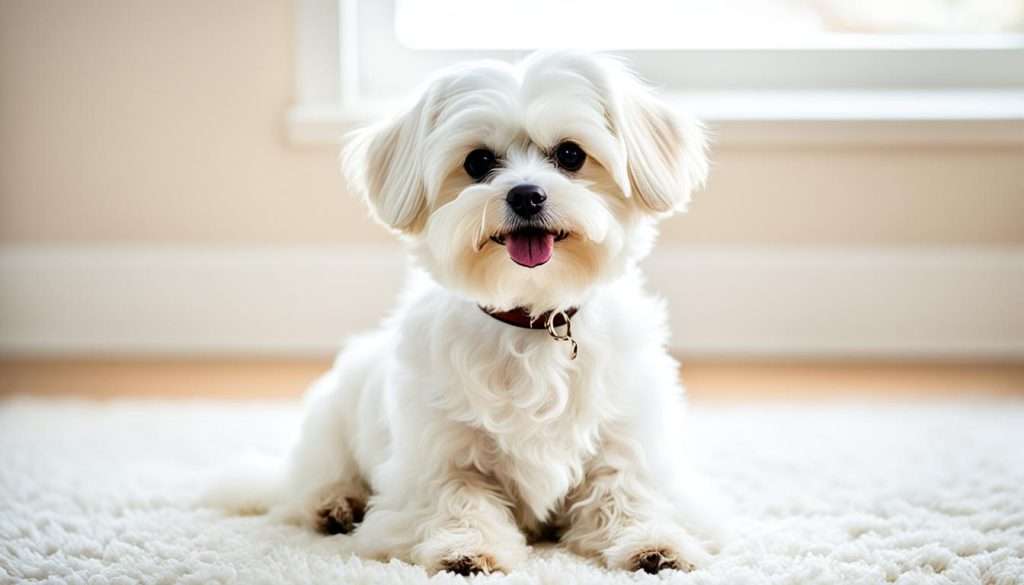
Schnauzers: Producing Less Pet Dander
If you’re an allergy sufferer looking for a dog breed that produces less pet dander, Schnauzers might be the perfect fit for you. These charming and intelligent dogs are known for their minimal shedding and low allergenicity, making them a popular choice among allergy sufferers.
Schnauzers have a distinctive wiry coat that requires regular grooming to maintain its hypoallergenic qualities. Regular brushing and trimming can help minimize the amount of loose hair and dander in your home, reducing the risk of allergic reactions. Additionally, Schnauzers have minimal oil on their skin, which contributes to lower levels of allergenic pet dander.
By following a few simple steps, you can keep your Schnauzer’s dander under control:
- Regular grooming: Brush your Schnauzer’s coat at least once a week to remove loose hair and dander. You can also consider professional grooming to ensure the coat is kept in optimal condition.
- Bathing: Bathe your Schnauzer every 4-6 weeks using a hypoallergenic dog shampoo. This can help remove any remaining dander and allergens from the coat.
- Clean your home: Vacuuming regularly and using a high-efficiency particulate air (HEPA) filter can help minimize allergens in your living space. Pay special attention to areas where your Schnauzer spends the most time.
- Allergy-friendly bedding: Provide your Schnauzer with a hypoallergenic dog bed and wash it regularly to reduce allergens in their sleeping area.
In addition to their hypoallergenic qualities, Schnauzers are known for their friendly and playful nature, making them great companions for individuals and families alike.
Testimonials
“I’ve always been allergic to dogs, but ever since we brought home our Schnauzer, I haven’t experienced any symptoms. It’s amazing how much of a difference a hypoallergenic breed can make.” – Anna T., Melbourne
“As an allergy sufferer, finding a hypoallergenic dog was a game-changer. Schnauzers are not only hypoallergenic, but they’re also incredibly smart and easy to train. I couldn’t imagine life without my furry friend.” – Mark S., Sydney
If you’re looking for a dog that won’t trigger your allergies, consider welcoming a Schnauzer into your home. With their low dander production and charming personality, they can make a great addition to any allergy-friendly household.
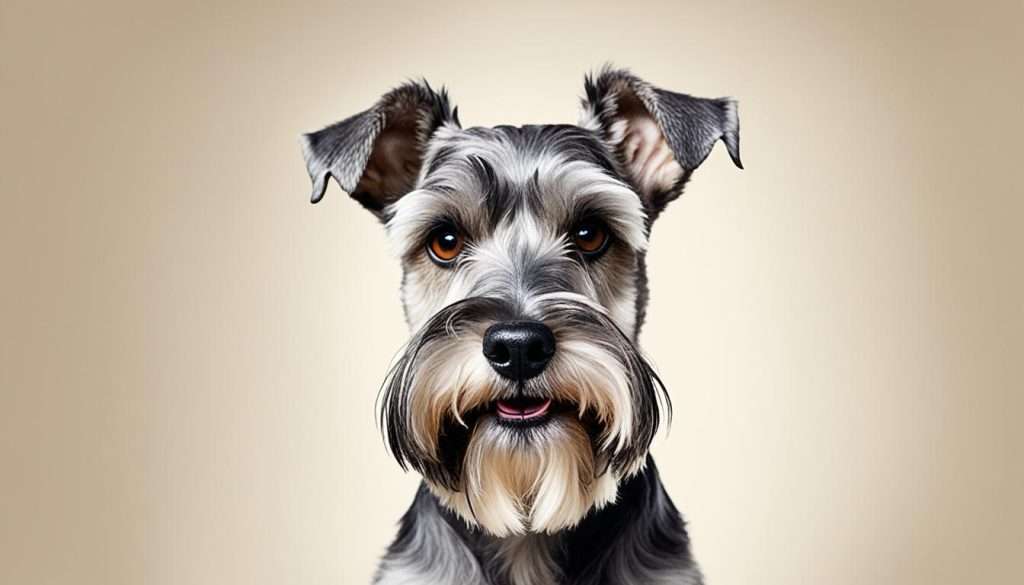
Saint Bernards and Bulldogs: Excessive Saliva and Allergy Concerns
If you’re allergic to dog saliva, it’s best to avoid breeds like Saint Bernards and Bulldogs. These breeds are known for excessive drooling, which can contain allergens that may trigger allergic reactions.
Allergic reactions to dog saliva can cause symptoms such as itching, sneezing, and difficulty breathing. For individuals with dog allergies, direct contact with saliva can be particularly problematic.
To reduce the risk of allergies, it is important to avoid direct contact with dog saliva, especially from breeds with excessive drooling. Regularly cleaning your dog’s toys and bedding can also help minimize exposure to allergens.
If you have severe dog allergies but still want to have a dog, it’s recommended to consult with a healthcare professional or an allergist who can provide guidance on the best breeds for your specific allergies.
Remember, owning a dog with excessive saliva is not recommended for allergy sufferers. However, there are other hypoallergenic dog breeds that produce less dander and are more suited to individuals with dog allergies. Consider exploring breeds that are known to be hypoallergenic and have minimal drooling, such as Bichon Frises or Labradoodles.
Quotes:
“For individuals with allergies, direct contact with dog saliva can exacerbate symptoms and trigger allergic reactions. It’s important to understand the potential risks associated with breeds like Saint Bernards and Bulldogs, which are known for excessive drooling.”
– Allergist Dr. Sarah Thompson
Summary of Allergy Concerns with Saint Bernards and Bulldogs:
| Concerns | Saint Bernards | Bulldogs |
|---|---|---|
| Excessive Drooling | Yes | Yes |
| Saliva Allergens | Yes | Yes |
| Breathing Difficulties | Possible | Possible |
Tiny Toy Breeds: The Maltese as an Option
When it comes to allergies, toy breeds are a popular choice for those seeking a hypoallergenic dog. One such breed is the Maltese, known for its small size and adorable appearance.
The Maltese produces less dander compared to larger breeds, making it less likely to cause allergic reactions in sensitive individuals. This is due to their minimal shedding and low dander production.
If you or a family member has dog allergies, having a tiny toy breed like the Maltese can make it easier to create a separate sleeping area for your furry friend. Allergic reactions can be minimized by keeping the bedroom off-limits to the dog and ensuring proper cleaning and grooming practices.
The Maltese has a long, flowing coat that requires regular brushing to prevent matting and tangling. This not only keeps their coat looking beautiful but also reduces dander buildup. Additionally, bathing the Maltese regularly can further minimize allergens.
With their charming personality and compact size, the Maltese is a delightful choice for allergy sufferers who want a small companion that is less likely to trigger allergic reactions.
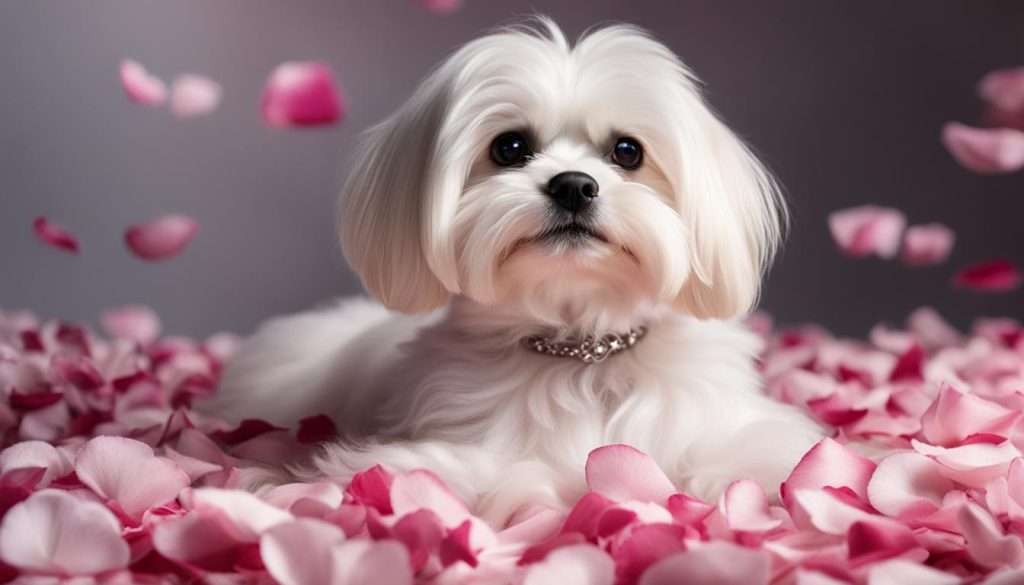
Tiny Toy Breeds: The Benefits of the Maltese
Here are some key benefits of the Maltese breed for allergy sufferers:
- Produces less dander
- Minimal shedding
- Easy to create a separate sleeping area
- Regular grooming helps reduce allergens
- Charming personality
German Shepherds and Dry Skin: Excessive Pet Dander
Regular bathing and grooming are important for maintaining the overall health and hygiene of your German Shepherd. However, it’s crucial to find a balance, as overdoing it can lead to dry skin, which may exacerbate the issue of excessive shedding and pet dander. Dry skin can also increase the risk of allergies in individuals who are sensitive to dog allergens.
Dry skin in German Shepherds can be caused by various factors, including environmental conditions, improper diet, or underlying health issues. When the skin becomes dry, it may trigger itching and discomfort, leading to excessive scratching and shedding. As a result, more pet dander is released into the environment, potentially causing allergic reactions in susceptible individuals.
To prevent dry skin in German Shepherds and minimize the production of pet dander, there are a few key steps you can take:
- Ensure your German Shepherd is on a well-balanced diet that provides the necessary nutrients for healthy skin and coat.
- Use a moisturizing shampoo and conditioner specifically formulated for dogs to prevent dryness and maintain the skin’s natural moisture balance.
- Avoid frequent bathing and opt for a bathing schedule that suits your dog’s individual needs and skin condition.
- Regularly brush your German Shepherd’s coat to remove loose hair and distribute natural oils that help keep the skin moisturized.
- Provide your dog with proper hydration by always having fresh water available.
- Consult with a veterinarian if you suspect underlying health issues that may be contributing to your German Shepherd’s dry skin.
By implementing these measures, you can help promote healthy skin and reduce the risk of excessive shedding and pet dander in your German Shepherd. It’s important to prioritize your dog’s skincare to create a comfortable living environment for both your pet and allergy sufferers in your household.
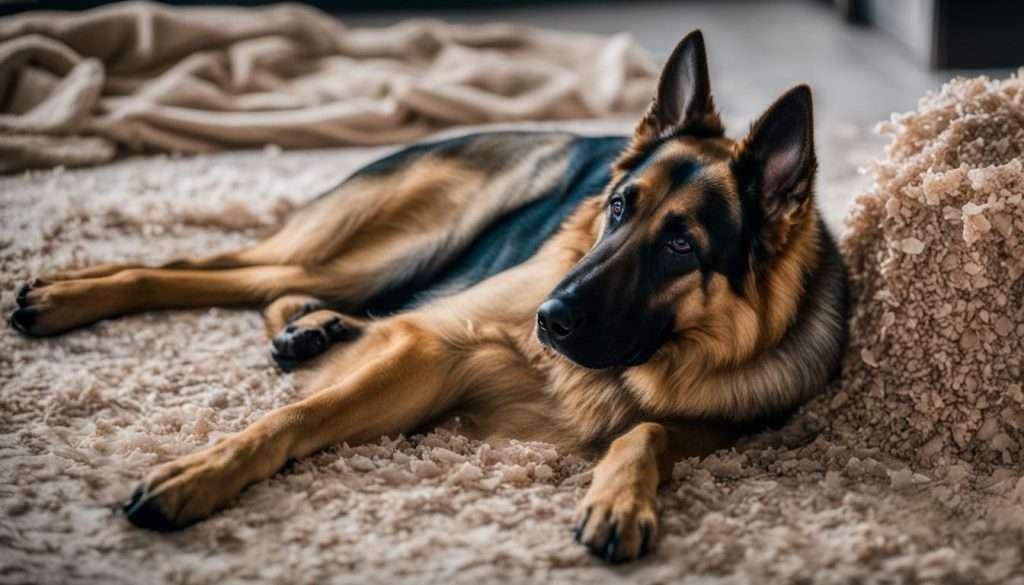
Bichon Frise and Labradoodle: Great Hypoallergenic Dogs
For those with dog allergies, the Bichon Frise and Labradoodle are fantastic choices. These breeds are renowned for their hypoallergenic qualities, making them suitable companions for allergy sufferers. The Bichon Frise and Labradoodle have coats that are easy to maintain and produce minimal dander, which significantly reduces the risk of causing allergic reactions.
Their curly or wool-like hair helps prevent the accumulation of outdoor allergens, making them ideal for individuals who enjoy spending time outside with their furry friends. Furthermore, both the Bichon Frise and Labradoodle have an enchanting appearance and a friendly temperament, making them wonderful additions to any household.
If you have allergies but still long for the companionship of a dog, consider welcoming a Bichon Frise or Labradoodle into your home. These hypoallergenic breeds offer the perfect balance of minimal allergen production and delightful companionship.
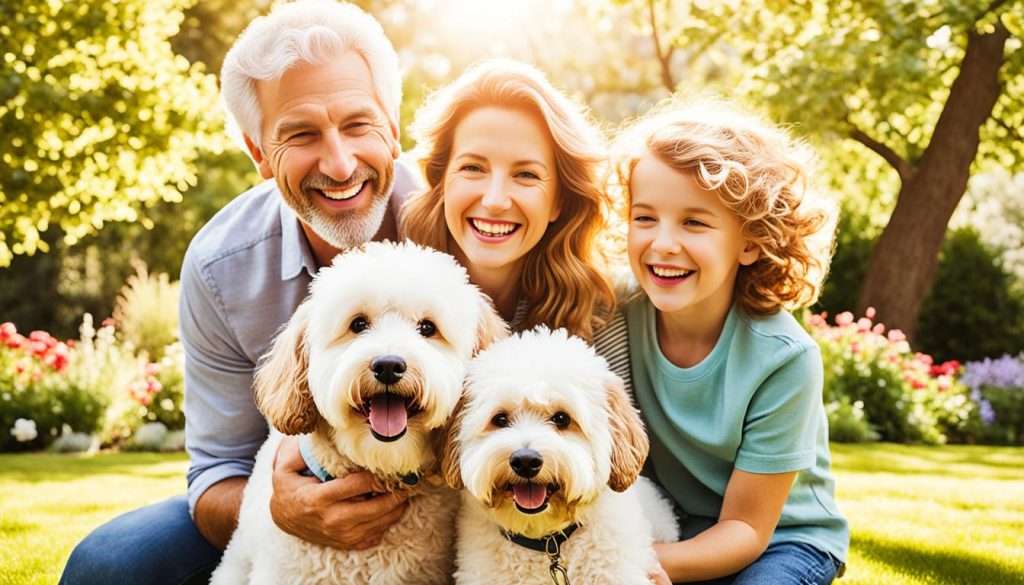
| Breed | Hypoallergenic Qualities | Temperament |
|---|---|---|
| Bichon Frise | Easy-to-maintain coat, minimal dander production | Friendly, sociable, affectionate |
| Labradoodle | Low-shedding, minimal dander production | Intelligent, trainable, playful |
Boston Terriers and Allergies
Boston Terriers, like many other breeds, can suffer from allergies themselves. Their own allergies and tendency for excessive mucus may make them less ideal for people with allergies. It’s important to consider both the dog’s and the owner’s allergy concerns when choosing a breed.
If you have allergies and are considering getting a Boston Terrier, it’s essential to be aware of their potential allergy-related issues. Boston Terriers are prone to allergies, which can manifest as skin irritations, excessive itching, and respiratory problems. These allergies can be triggered by various factors, including pollen, dust mites, certain foods, or even the materials used in their bedding or toys.
While Boston Terriers can make wonderful pets, it’s crucial to take precautions to minimize allergic reactions. Regular grooming and bathing can help remove allergens from their coats, reducing the chances of triggering allergies. It’s also essential to ensure a clean and allergen-free environment by regularly washing their bedding, vacuuming the house, and avoiding exposure to known allergens.
If you or someone in your household has allergies, it’s advisable to consult with a veterinarian before bringing a Boston Terrier into your home. They can provide guidance on managing allergies and recommend suitable hypoallergenic products, such as shampoos or cleaning solutions, to help minimize allergic reactions. Additionally, they may be able to suggest specific dietary adjustments or identify potential environmental triggers.
Remember, every individual’s allergies are unique, and what works for one person may not work for another. It’s essential to monitor any allergy symptoms carefully and make adjustments as needed to ensure the well-being of both you and your Boston Terrier.
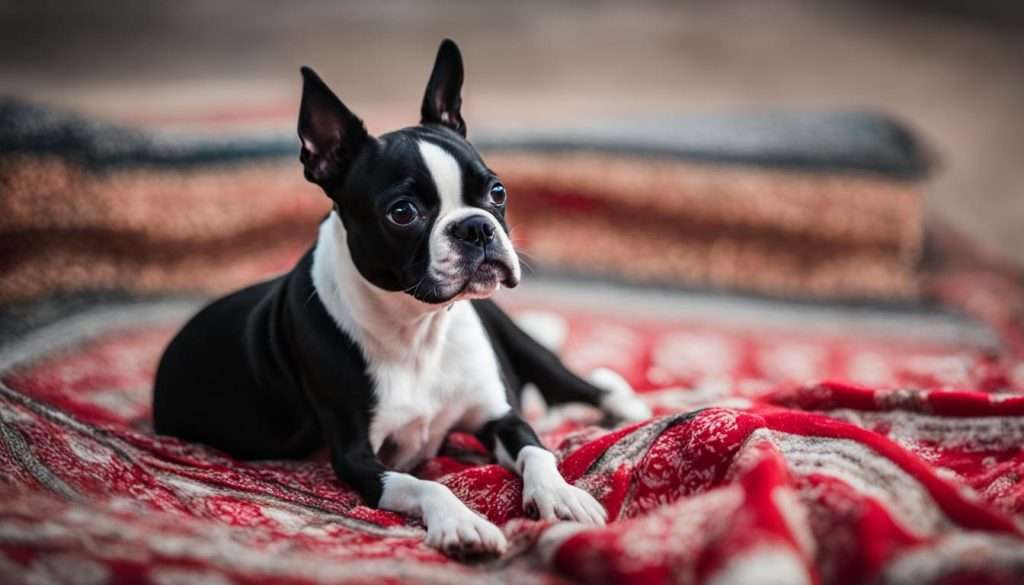
Possible Allergy Symptoms in Boston Terriers:
- Excessive itching and scratching
- Rashes or redness on the skin
- Frequent ear infections
- Watery or itchy eyes
- Sneezing or coughing
- Runny nose or excess mucus
“It’s important to consider both the dog’s and the owner’s allergy concerns when choosing a breed.”
| Allergens | Tips to Minimize Allergies |
|---|---|
| Pollen | Avoid outdoor activities during peak pollen times. Wipe your Boston Terrier’s paws after walks to minimize pollen transfer. |
| Dust Mites | Regularly vacuum your home, including upholstery and carpets. Wash your Boston Terrier’s bedding in hot water to kill dust mites. |
| Foods | Work with a veterinarian to identify and avoid potential food allergens. Consider a hypoallergenic diet for your Boston Terrier. |
| Bedding/Toys | Choose hypoallergenic bedding materials and wash your Boston Terrier’s toys regularly. |
Portuguese Water Dogs: Suitable for Outdoor Living
For allergy sufferers who cannot bear to have a dog indoors, breeds like the Portuguese Water Dog can live well outside. With their waterproof coats and webbed feet, these dogs are well-suited for outdoor living. Providing proper shelter, fresh water, and regular exercise can keep them happy and healthy.
If you have dog allergies and enjoy spending time outdoors, a Portuguese Water Dog may be the perfect companion for you. These versatile dogs are known for their ability to adapt to various climates and terrains, making them excellent outdoor dogs. Whether you’re an avid hiker, swimmer, or simply enjoy spending time in nature, a Portuguese Water Dog can be your loyal and adventurous partner.
Take note that outdoor dogs require extra care and attention to ensure their well-being. Here are some essential factors to consider:
- Shelter: Provide a suitable shelter that protects the dog from extreme weather conditions, such as a dog house or a covered area. Make sure it is spacious enough for the dog to move comfortably and has proper insulation.
- Fresh water: Always ensure your Portuguese Water Dog has access to clean, fresh water. It’s crucial to regularly refill their water bowl and check it throughout the day, especially during warmer seasons.
- Regular exercise: These active and energetic dogs require regular exercise to stay healthy and happy. Engage in activities that suit their natural instincts, such as swimming, playing fetch, or going for long walks.
- Grooming: Despite their waterproof coats, Portuguese Water Dogs still require regular grooming. Brush their coat to prevent matting and remove any debris or dirt they may pick up while exploring the great outdoors.
“Portuguese Water Dogs thrive when they have plenty of opportunities for mental and physical stimulation. Keep them engaged and entertained by providing toys, puzzles, and interactive games.”
With their friendly and sociable nature, Portuguese Water Dogs make great companions for outdoor enthusiasts. These intelligent and trainable dogs are often used in water rescue and are known for their excellent swimming abilities. Whether you’re spending time at the beach, going camping, or simply enjoying a backyard barbecue, a Portuguese Water Dog will always be by your side, ready for an adventure.
Pekingese: Challenges in House-Training
House-training a dog is an essential part of pet ownership, but it can be more challenging with certain breeds, such as the Pekingese. When considering a Pekingese for your home, it’s important to understand the unique house-training challenges that may arise.
The Pekingese breed tends to be more independent and stubborn, which can make the house-training process longer and more frustrating. These dogs are known for their strong-willed nature, and they may resist following commands or routines.
Consistency is key when house-training a Pekingese. Establish a routine and stick to it, ensuring regular potty breaks and consistent commands. Positive reinforcement techniques, such as praise and treats, can motivate your Pekingese to follow the desired behavior.
It’s important to note that accidents can happen during the house-training process, especially with a more challenging breed like the Pekingese. These accidents can increase the allergen exposure in your home, which may be a concern for individuals with dog allergies.
To maintain an allergy-friendly environment, it’s crucial to promptly clean and sanitize any areas where accidents occur. Use pet-friendly cleaning products and follow proper sanitation procedures to minimize allergens. Regular vacuuming and dusting can also help remove pet dander from surfaces.
Remember, house-training a Pekingese requires patience, consistency, and understanding. With proper training, your Pekingese can become a well-behaved and cherished member of your family.
| Challenges in House-Training a Pekingese | Solutions for Allergy-Friendly Environment |
|---|---|
| 1. Independent and stubborn nature | 1. Promptly clean and sanitize areas of accidents |
| 2. Resistance to commands or routines | 2. Use pet-friendly cleaning products |
| 3. Longer and more frustrating house-training process | 3. Regular vacuuming and dusting |
| 4. Consistency in potty breaks and commands | |
| 5. Positive reinforcement techniques |
Xoloitzcuintli: A Good Fit for Families
The Xoloitzcuintli, also known as Xolo, is a hypoallergenic dog breed that can be a good fit for families. These dogs are known for their friendly and affectionate nature, making them excellent companions for both adults and children.
One of the key advantages of Xoloitzcuintli is their hypoallergenic qualities. They come in hairless and coated varieties, both of which have minimal shedding and produce little dander. This makes them suitable for families with allergies, as the reduced dander helps minimize allergic reactions.
Not only are Xoloitzcuintli hypoallergenic, but they also have low-maintenance coats. The hairless variety requires occasional skincare to keep their skin moisturized and protected from the sun, while the coated variety needs regular brushing to prevent matting. However, compared to other breeds that require extensive grooming, Xolos are relatively low-maintenance.
“Xoloitzcuintlis are excellent choices for families with allergies. Their hypoallergenic qualities and low-maintenance coats make them easy to care for while minimizing allergen exposure.” – Dr. Sarah Thompson, Veterinary Allergist
Furthermore, Xoloitzcuintli are known to be great family dogs. They are loving, loyal, and typically get along well with children and other pets when properly socialized. Xolos are also intelligent and trainable, making them adaptable to various environments and living situations.
If you’re considering adding a Xoloitzcuintli to your family, it’s essential to provide them with the love, attention, and exercise they need. Regular walks, mental stimulation, and socialization are crucial to ensure they remain happy and well-adjusted members of your family.
To sum up, Xoloitzcuintli can be an ideal choice for families looking for a hypoallergenic dog breed. Their minimal shedding, low dander production, and friendly nature make them suitable for households with allergies, while their easy-going temperament and adaptability make them excellent family companions.
Conclusion
Finding the right dog for allergy sufferers can be a challenge, but it’s not impossible. By choosing breeds that produce less dander and are more allergy-friendly, you can minimize the risk of allergic reactions. While no dog is completely hypoallergenic, there are certain breeds that are known to be better suited for individuals with allergies.
Regular grooming and cleaning are essential for creating a pet-friendly environment for allergy sufferers. This includes brushing your dog’s coat regularly to remove loose hair and dander, as well as bathing them with hypoallergenic shampoo to keep their skin clean and healthy. Additionally, vacuuming and dusting your home frequently can help reduce the presence of allergens in the environment.
When considering a dog breed for allergies, it’s important to take into account your specific needs and sensitivities. Some breeds, such as Schnauzers, Bichon Frise, and Labradoodles, are known to be more hypoallergenic due to their low shedding and minimal dander. However, it’s always recommended to spend time with a dog of the chosen breed to see how your allergies react before making a final decision.
Remember, owning a dog is a big responsibility, especially for allergy sufferers. It’s important to consult with a healthcare professional or allergist before bringing a new dog into your home. They can provide guidance on the best breeds for your specific allergies and offer tips on managing your allergies while enjoying the companionship of a furry friend.
FAQ
What are the best dog breeds for allergies?
Some of the best dog breeds for allergy sufferers include Schnauzers, Bichon Frise, Labradoodle, Maltese, and Xoloitzcuintli. These breeds produce minimal dander and are less likely to trigger allergic reactions.
Why are Schnauzers considered hypoallergenic?
Schnauzers are known to produce less dander than other breeds, making them a good choice for allergy sufferers. Their low shedding coats and minimal dander can help reduce allergic reactions. Regular grooming and cleaning can further minimize allergens in the environment.
Should I avoid breeds with excessive saliva?
If you’re allergic to dog saliva, it’s best to avoid breeds like Saint Bernards and Bulldogs. These breeds are known for excessive drooling, which can contain allergens that may trigger allergic reactions. Avoiding direct contact with saliva and regularly cleaning toys can help reduce the risk of allergies.
Are toy breeds suitable for allergy sufferers?
When it comes to allergies, creating a separate sleeping area for a dog is easier when it’s a small toy breed like the Maltese. These tiny dogs produce less dander and are less likely to cause allergic reactions. Keeping the bedroom off-limits to the dog can further minimize exposure to allergens.
Can German Shepherds trigger allergies?
While regular bathing and grooming can help minimize pet dander, overdoing it can lead to dry skin in certain breeds like German Shepherds. Dry skin can result in excessive shedding and dander, which may trigger allergies. It’s important to find a balance and ensure proper skincare for dogs prone to dry skin.
Why are Bichon Frise and Labradoodle recommended for allergy sufferers?
Both the Bichon Frise and Labradoodle are often recommended for people with dog allergies. These breeds have easy-to-maintain coats and produce minimal dander. Their curly or wool-like hair can prevent the accumulation of outdoor allergens. This makes them great choices for allergy sufferers.
Are Boston Terriers suitable for people with allergies?
Boston Terriers, like many other breeds, can suffer from allergies themselves. Their own allergies and tendency for excessive mucus may make them less ideal for people with allergies. It’s important to consider both the dog’s and the owner’s allergy concerns when choosing a breed.
Can Portuguese Water Dogs live outside?
For allergy sufferers who cannot bear to have a dog indoors, breeds like the Portuguese Water Dog can live well outside. With their waterproof coats and webbed feet, these dogs are well-suited for outdoor living. Providing proper shelter, fresh water, and regular exercise can keep them happy and healthy.
Should I avoid breeds that are difficult to house-train?
Some breeds, like the Pekingese, can be more difficult to house-train than others. This can make them a poor choice for people with dog allergies, as accidents can increase allergen exposure. Proper cleaning and sanitation are important to maintain an allergy-friendly environment.
What makes the Xoloitzcuintli a good fit for families with allergies?
The Xoloitzcuintli, also known as Xolo, is a hypoallergenic dog breed that can be a good fit for families. These dogs come in hairless and coated varieties, both of which have minimal shedding and produce little dander. Their low-maintenance coats and friendly nature make them suitable for families with allergies.
Are there completely hypoallergenic dogs?
While there is no such thing as a completely hypoallergenic dog, certain breeds are known to be more allergy-friendly. It’s important to find a breed that produces less dander and take steps to minimize exposure to allergens, such as regular grooming and cleaning, to create a pet-friendly environment for allergy sufferers.